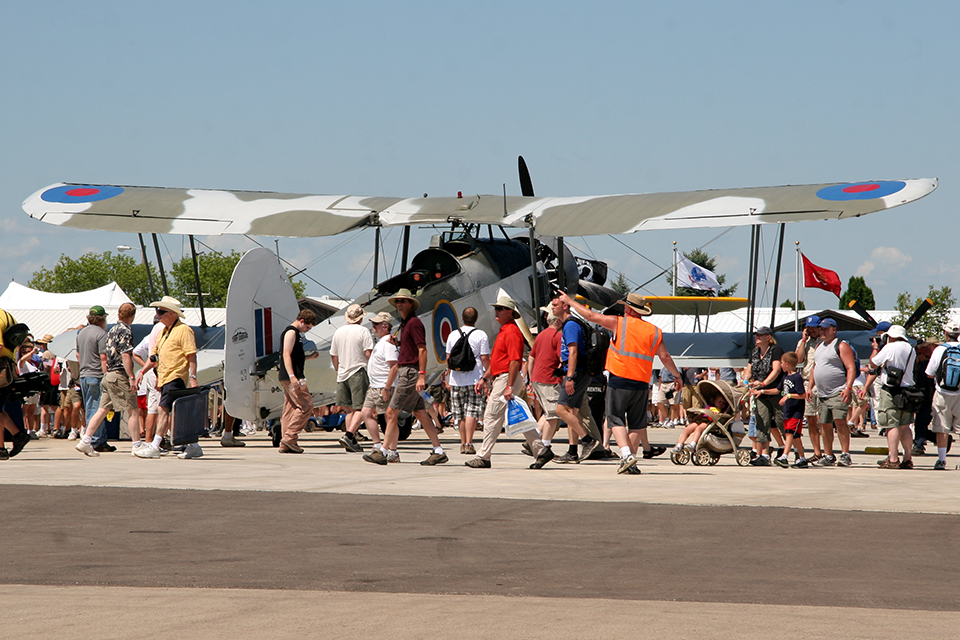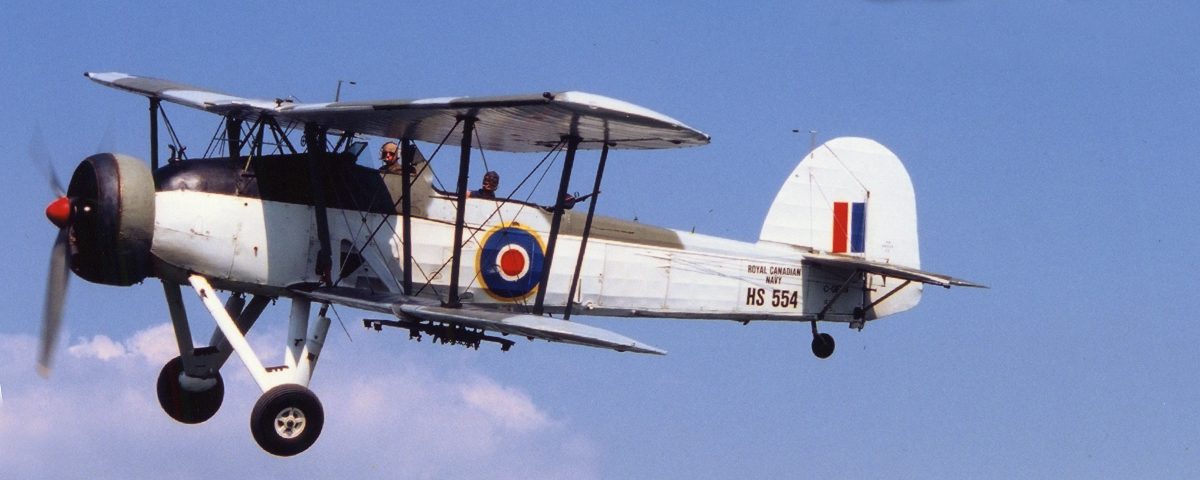The Fairey Swordfish biplane torpedo bomber was one of the most unusual yet effective World War II aircraft. The Royal Navy’s Fleet Air Arm deployed it as late as May 1945, which would have been akin to the U.S. Army Air Forces ending WWII with Boeing P-26 Peashooters battling Me-109s. Fortunately, the Swordfish faced few aerial opponents. The Germans had no aircraft carriers, so as long as Swordfish operated far enough from fighter bases—typically from carriers—they were free to do major damage. In a November 1940 night attack during the Battle of Taranto, Swordfish mauled one Italian battleship so badly that it never sailed again and seriously damaged two more and a cruiser. In May 1941, a Swordfish torpedo disabled the German battleship Bismarck’s steering gear and set up the ship for sinking the next day.

Two Swordfish are currently flying, one in the hands of Britain’s Royal Navy Historic Flight (which has a second plane that is flyable but parked) and the second put back into the air last July by Vintage Wings of Canada (vintagewings.ca). That airplane was originally restored in the 1980s but eventually needed engine work. Vintage Wings sent the rare Bristol Pegasus 9- cylinder radial to England for overhaul, a job that took 4½ years. The engine was damaged during shipment back to Canada, though Vintage Wings, loath to return the engine to its rebuilders—“It’d probably be another four years before we saw it again,” writes Vintage Wings’ Dave O’Malley— managed to repair the damage at its new facilities at Ottawa/ Gatineau Airport. Vintage Wings has no plans to take the Swordfish on airshow tours (though it did appear at Oshkosh); it will operate only from the organization’s home base.
Swordfish trivia: The sobriquet “Stringbag” is assumed by many to refer to the airplane’s many struts and wire braces, but it in fact meant to imply that, like a 1940s housewife’s grocery-lugging stringbag, the airplane could carry anything you could fit into it. And not all Swordfish were manufactured by Fairey; some were built by Blackburn Aircraft under contract, and are informally known as Blackfish.
Originally published in the January 2012 issue of Aviation History. To subscribe, click here.





